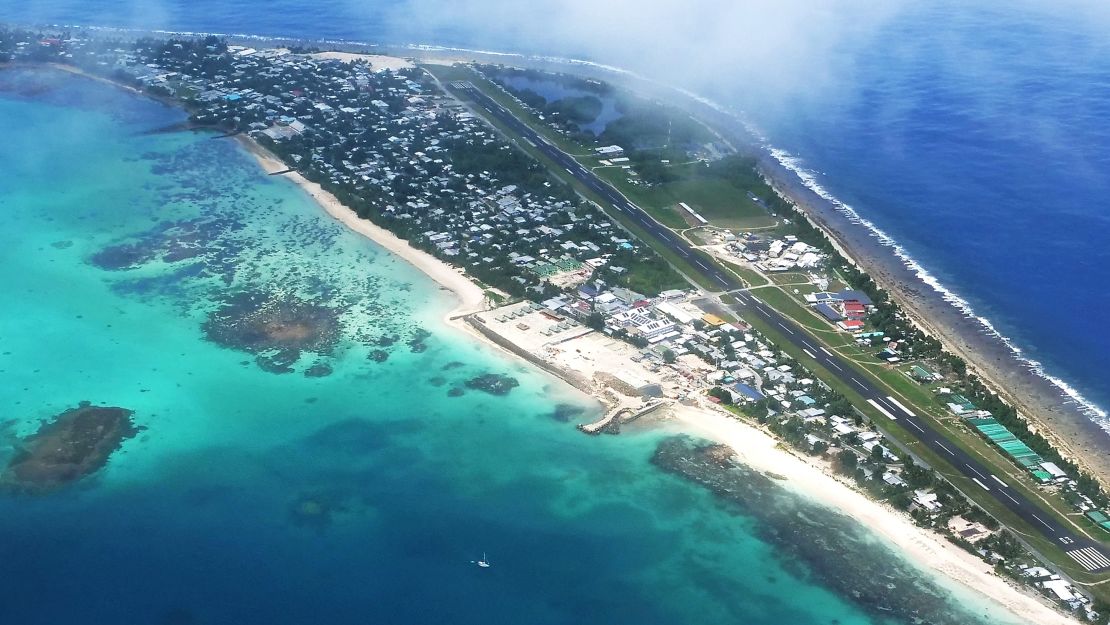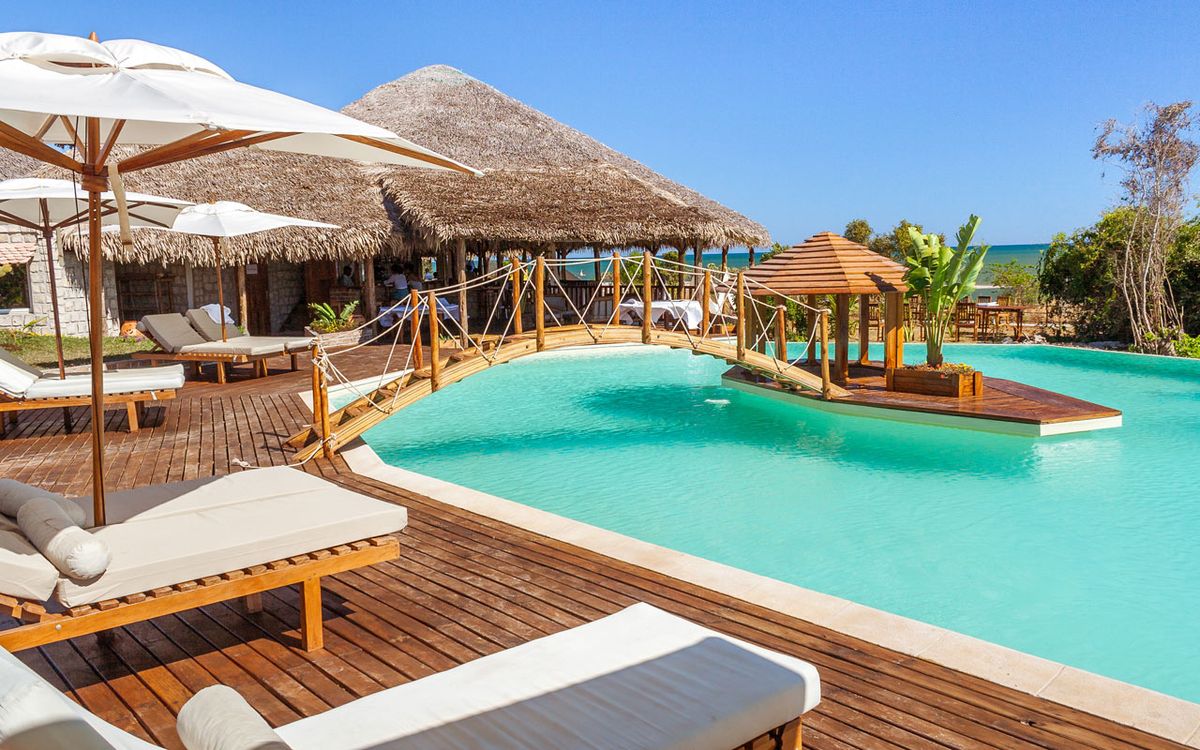Every two years, for more than a decade, I’ve made the 24-hour trip to Australia, each time for a month-long holiday to escape London’s midwinter misery. My husband, who’s Scottish, lived in Melbourne in his twenties, and part of his heart remains lodged in its graffiti-covered lanes, with their flat whites and wine bars. He almost moved there permanently before we met and we have a huge circle of friends there. Continuing to fly there feels to us — as it does for many people with family and friends in other places around the world — non-negotiable.
After turning 50 last year, though, I made a decision that any flight over seven hours would be taken in the cabin with the seats that turn into beds.
So I spent an afternoon working out routes, layover timings and — most important — costs for our next trip to Oz.
A Melbourne laneway with cafes and coffee bars
ALAMY
While I’d love to book return business class with BA, I don’t have the £8,058.46 it costs for a ticket. So I set to work to find the cheapest possible way to get there.
I had hoped to get a two-for-one deal using Amex vouchers I’d banked from spending heavily on my Amex card, but that didn’t work out due to restrictions on routes and lack of availability.
Another plan formed. At Heathrow last year we bumped into a friend who used to work for an airline and was on his way to Sweden. A winter weekend break? “No, I’m flying to Thailand,” he explained. “It’s a fraction of the cost for business class if you go from Stockholm rather than London.” His insider knowledge was a revelation. The difference in pricing is to do with taxes, but also airlines trying to attract customers from neighbouring countries for their long-haul routes.
London is nearly always the most expensive place to start a flight from in Europe because the UK has some of the loftiest aviation taxes in the world, plus demand is high.
● The ultimate Australian travel guide
● The best Australian experiences
I discovered a handy website — matrix.itasoftware.com — that trawls booking engines for the cheapest way to fly from A to B in whatever class of travel you’re looking for. Generally, the more connections you are prepared to tolerate the cheaper your fare will be. If you’re looking for economy flights the hassle and cost of an extra layover probably isn’t worth it. But if you want to fly in comfort it certainly is.
The key to getting the cheapest flight possible is finding the cheapest starting point, and booking everything as a single trip, on a single ticket, from that city.
So I made a pot of coffee and settled down for the afternoon with various windows open on my browser. The result was a pair of return tickets in business class on Cathay Pacific from Europe to Australia that cost £2,800* each, flying from Copenhagen to Amsterdam, on to Hong Kong, then Melbourne (Route A). The return: Sydney to Hong Kong to Frankfurt to Copenhagen. The layovers were short, all under a couple of hours.
Conveniently I had a credit on my BA account (from trips cancelled in 2020) that covered the return flights from London to Copenhagen. If I hadn’t, easyJet or Norwegian were offering returns for £70 each.
The Matrix software is helpful, but doesn’t do all the work for you. First, there isn’t a de facto cheapest city in Europe to fly from, so you have to run through all the options of where you’re prepared to start the long-haul leg of your trip. Copenhagen was shortlisted as a place we wanted to visit anyway.
There’s an obvious elephant in the room here: the climate impact of taking a route that involves more flights. It’s unfortunate that the aviation industry is effectively incentivising customers to spend more time in the air and produce more emissions.
We ruled out several route options because they involved flying back to London for the first connection, which felt absurd. In fact we paid an extra £200 for our final choice by insisting on an Amsterdam rather than a London connection from Copenhagen. It would seem Cathay is keen on getting customers from Denmark for its long-haul business class flights, so is subsidising the route to get them. If this all sounds bewildering, that’s because it is.

You could save money by flying to Australia from Copenhagen
GETTY IMAGES
If we had gone with the absolute cheapest option from Copenhagen to Australia, we would have had to come back to London before flying to Hong Kong then Melbourne (Route B), which would have cost £2,600 each* return. Taking exactly the same flight but starting from London would have cost £5,200* (Route C).
With that kind of difference, you can throw in dinner at Noma in Copenhagen with a wine pairing (£625), have lunch there again the next day, stay at the Arne Jacobsen-designed Radisson Collection Royal Hotel (from £185 a night), and still have saved enough for another weekend away.
You use Matrix purely as a guide. You can’t actually make bookings on it, but it links to where you can cut and paste your itinerary, and book from there, going to the main airline involved and booking directly.
I didn’t do this and regretted it. The day I booked, the Cathay Pacific website was glitchy and wouldn’t process a multicity route. Rather than calling, I booked via Expedia. It was still effectively a Cathay Pacific reservation with the same connections and price, but it was booked by Expedia, acting as Cathay’s agent.
This would prove to be a mistake. Two weeks later Cathay cancelled one of the flights and its system rebooked us on one that landed in Hong Kong after our flight to Melbourne would take off. Cathay and Expedia both blamed one another, and tasked the other with solving the problem. Palaver ensued and my husband threatened to cancel the whole thing, but after a hundred online chats I sorted it out.

Noma, Copenhagen
THIBAULT SAVARY/AFP/GETTY IMAGES
The flights were secured, with flat beds, on the airline we wanted, on the right days, with a long weekend in Copenhagen thrown in.
My preference would be to use a two-for-one reward voucher and fly direct from London, thus saving time and carbon. But since I can’t, I would absolutely do this again. I mean, what’s not to love about a discount that allows extra cash to spend on a few days of cinnamon buns and hygge?
*Prices were accurate at the time of searching but will vary the time of year you book.
How to bag yourself a bargain
● Log onto matrix.itasoftware.com
● Fill in your destination, dates and details. To get the cheapest suggestions, the secret is to keep your options open and not limit the widget to preferred times of day, exact dates and number of stops you prefer.
● Set your ticket preference — premium economy, business or first class or “cheapest available”.
● Make sure the pink boxes ( “Allow airport changes” and “Only show flights and prices with available seats”) are ticked.
● Press search and you will be taken to your options. Cut and paste the itineraries and book your tickets via Expedia or direct with the airlines.
Follow us on Instagram and Twitter
Source: thetimes.co.uk

George Barham, an accomplished journalist and avid gambling enthusiast, serves as the esteemed Editor-in-Chief at fly-to-australia.com, Australia’s leading source for comprehensive gambling news and insights. With an unwavering passion for both the written word and the ever-evolving world of betting and gaming, George brings a wealth of knowledge and expertise to the helm of our editorial team.



